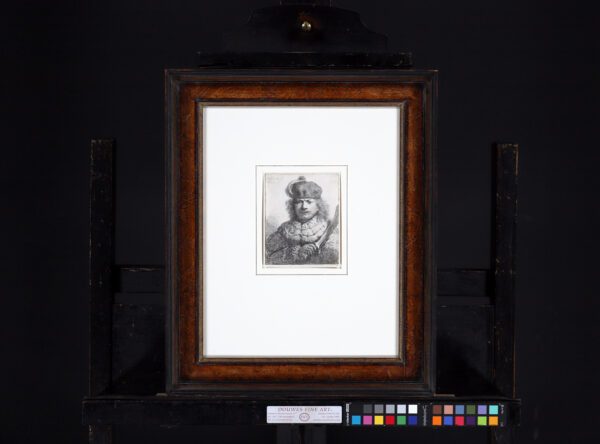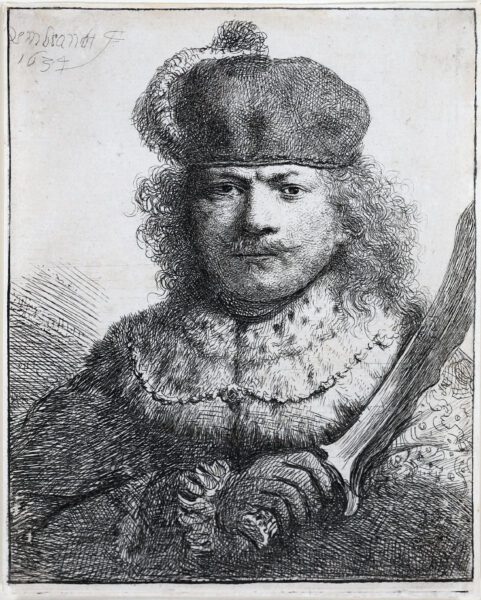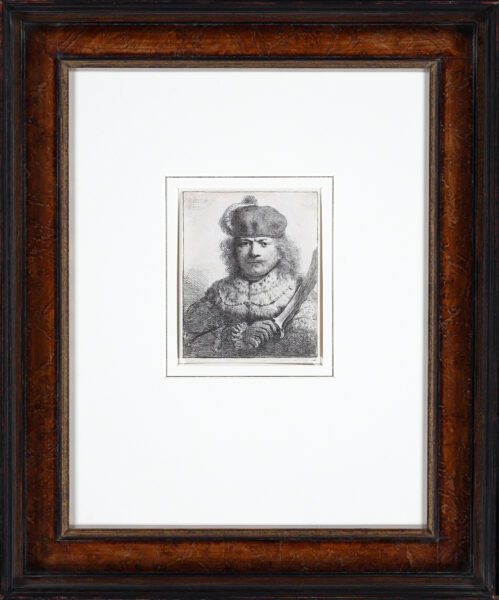“Self-Portrait with Raised Sabre”, 1634
Etching, with touches of burin on laid paper.: 12,4 x 10 cm
Signed and dated upper left: Rembrandt f. 1634, with narrow margins
"*" indicates required fields
Notes
During his lifetime, Rembrandt’s extraordinary skills as a printmaker were the main source of his international fame. Unlike his oil paintings, prints travelled light and were relatively cheap. For this reason, they soon became very popular with collectors not only within but also beyond the borders of the Netherlands.
Rembrandt’s etchings are remarkable for their high number of self-portraits (over 30 out of about 290). These are particularly collectible, perhaps due to the smaller number of states as well as the artist’s compelling and powerful presence. Unlike his stately religious scenes, or regal, posed portraits of others, which exhibit his careful and calculating brilliance as an etcher, Rembrandt’s self-portraits reveal him as an artist and a man. In them he assumes the role of the experimenting artist, approaching the most difficult of subjects – himself. These self-portraits are often described as ethereal and wistful for their notable contrasting areas of high and low etched space.
In this self-portrait from 1634, Rembrandt shows himself in rich clothing and with an oriental sabre from his extensive collection of art and curiosities.
During his forty-year career, Rembrandt painted, etched, and drew more than seventy-five self-portraits. These introspective works reveal a complex quest for identity that is tied to the growth of individualism in seventeenth-century Holland. In this etching, which dates from Rembrandt’s first decade in Amsterdam, he dons a luxurious, old-fashioned costume—selected from his large collection of studio props—to fashion himself as an imagined Renaissance monarch or courtier. In doing so, he set himself apart from conventional self-portraiture, which featured contemporary gentlemanly attire, at a time when he was intent on establishing himself as a successful portraitist and virtuoso artist.
He is shown with an ostrich plume in the beret and an Asian sabre in his hand. This is not the first and only example of a portrait of himself dressed in a costume. The image is rendered en face: the combination of the eyes gazing fixedly at the viewer and the threatening gesture of the sabre imbue the sitter with a sense of power and status.
Literature
Bartsch 18; White/Boon 18;
The New Hollstein Dutch 134 Second state (of II) ;
Nowell-Usticke R+, A scarce, attractive plate: Plate not in existence
Provenance
- Private collection, Germany.
- Private collection, The Netherlands





